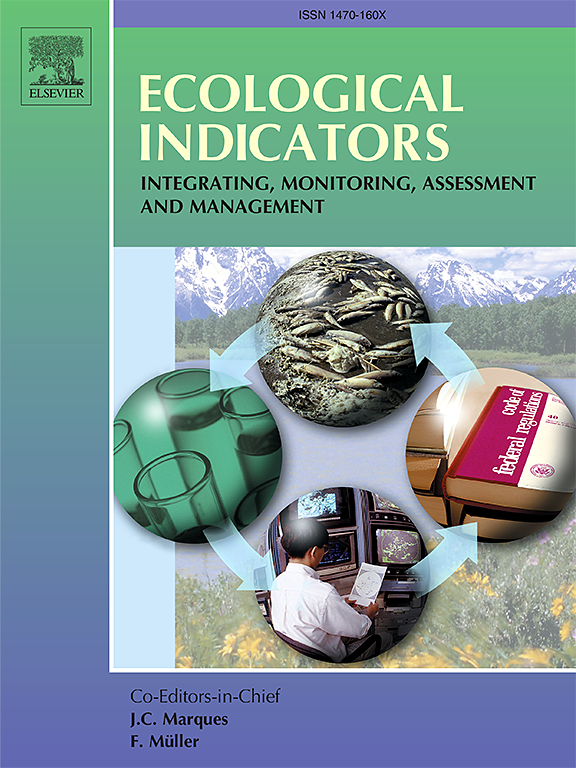Patterns of nutrients and algal biomass in an intermittent Mediterranean river under intense human activity
IF 7
2区 环境科学与生态学
Q1 ENVIRONMENTAL SCIENCES
引用次数: 0
Abstract
Non-perennial streams are often affected by human activities such as sewage water disposal and agriculture. The limited capacity of these systems to dilute pollutants, along with the extent of water flow interruption, leads to a high variability of nutrient concentrations and algal biomass, with relevant implications for water quality. The temporal and spatial patterns of nutrients—Total Nitrogen (TN), Nitrates (), Total Phosphorus (TP), and Phosphates ()—and chlorophyll (as a surrogate of algal biomass) were characterized in a Mediterranean river system to determine their relationship to water flow intermittency and human activities. To achieve this, monthly measurements of water quality, physicochemical characteristics and algal biomass were collected at 23 different locations over 14 months, coinciding with the onset of drought conditions in the region. Random forest regression and the model-agnostic SHapley Additive exPlanations (SHAP) enabled us to identify the most influential hydrological and land use features for nutrient concentrations and map the spatial variation of their effects across the basin. The highest variability in nutrient concentrations occurred in the headwaters, while high values consistently occurred in the middle and lower segments. While TN and sources were diffuse, mainly agriculture, TP and levels were determined by the number of effluent point sources. Overall, water flow intermittency was not a strong predictor of nutrient patterns; however, its influence was more pronounced at specific sites. Applying the same modeling approach, we identified that suspended chlorophyll levels (but not benthic chlorophyll) correlated with nutrient concentrations, showing a notable association to TP and seasonal variations in precipitation and temperature. Our analysis underscores the complex interactions between hydrology, human activities, and nutrient dynamics in river basins subjected to water flow intermittency and highlights the need for management strategies focused on local polluted points.

求助全文
约1分钟内获得全文
求助全文
来源期刊

Ecological Indicators
环境科学-环境科学
CiteScore
11.80
自引率
8.70%
发文量
1163
审稿时长
78 days
期刊介绍:
The ultimate aim of Ecological Indicators is to integrate the monitoring and assessment of ecological and environmental indicators with management practices. The journal provides a forum for the discussion of the applied scientific development and review of traditional indicator approaches as well as for theoretical, modelling and quantitative applications such as index development. Research into the following areas will be published.
• All aspects of ecological and environmental indicators and indices.
• New indicators, and new approaches and methods for indicator development, testing and use.
• Development and modelling of indices, e.g. application of indicator suites across multiple scales and resources.
• Analysis and research of resource, system- and scale-specific indicators.
• Methods for integration of social and other valuation metrics for the production of scientifically rigorous and politically-relevant assessments using indicator-based monitoring and assessment programs.
• How research indicators can be transformed into direct application for management purposes.
• Broader assessment objectives and methods, e.g. biodiversity, biological integrity, and sustainability, through the use of indicators.
• Resource-specific indicators such as landscape, agroecosystems, forests, wetlands, etc.
 求助内容:
求助内容: 应助结果提醒方式:
应助结果提醒方式:


